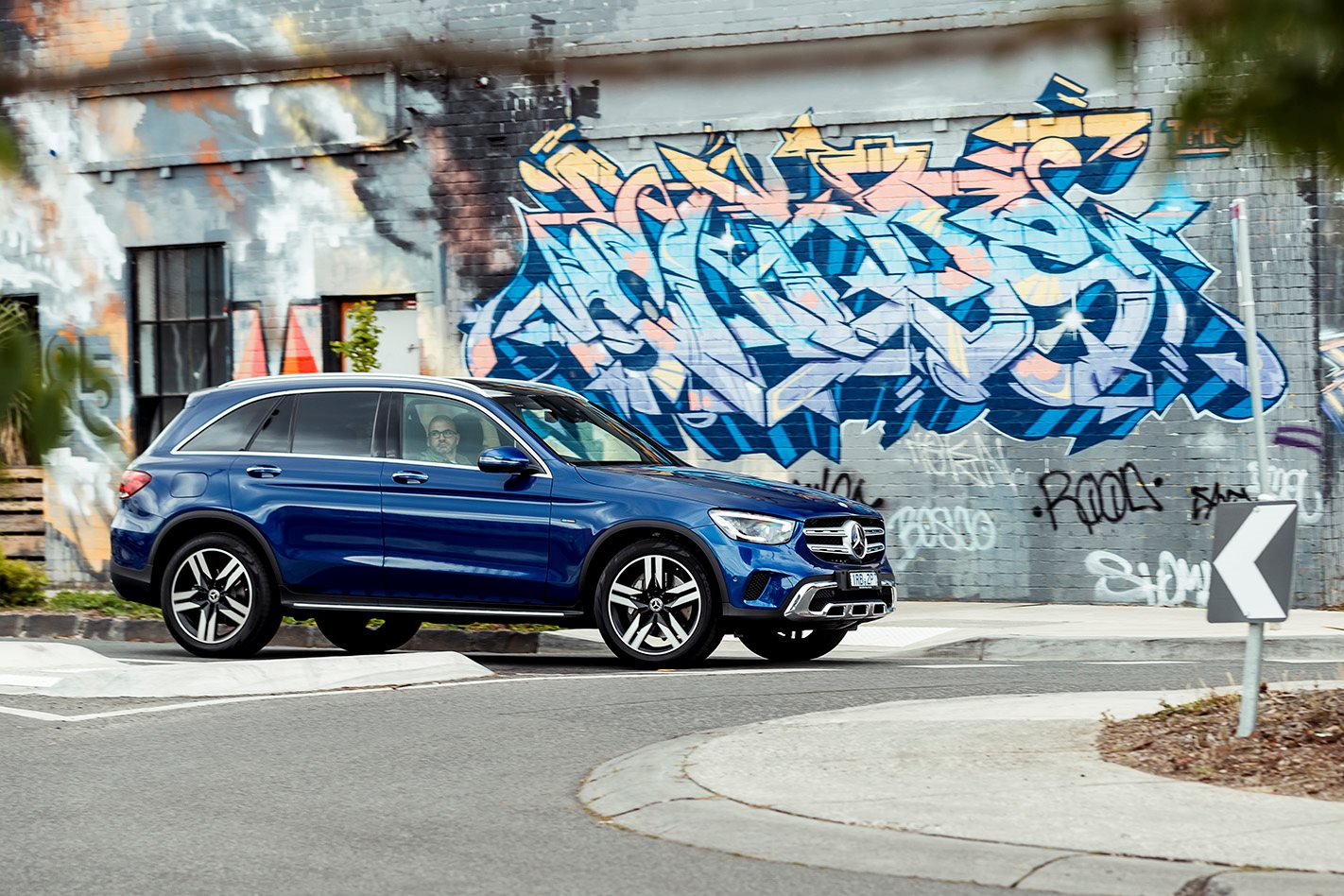
Update 1: Emerging from lockdown in style
The most surprising thing about the Mercedes-Benz GLC 300e plug-in hybrid SUV is that its $86,300 starting price is just $4800 more than the petrol GLC 300.
That’s a very reasonable price to pay to gain Benz’s excellent EQ electrification and about 46km of emissions-free driving between charges.
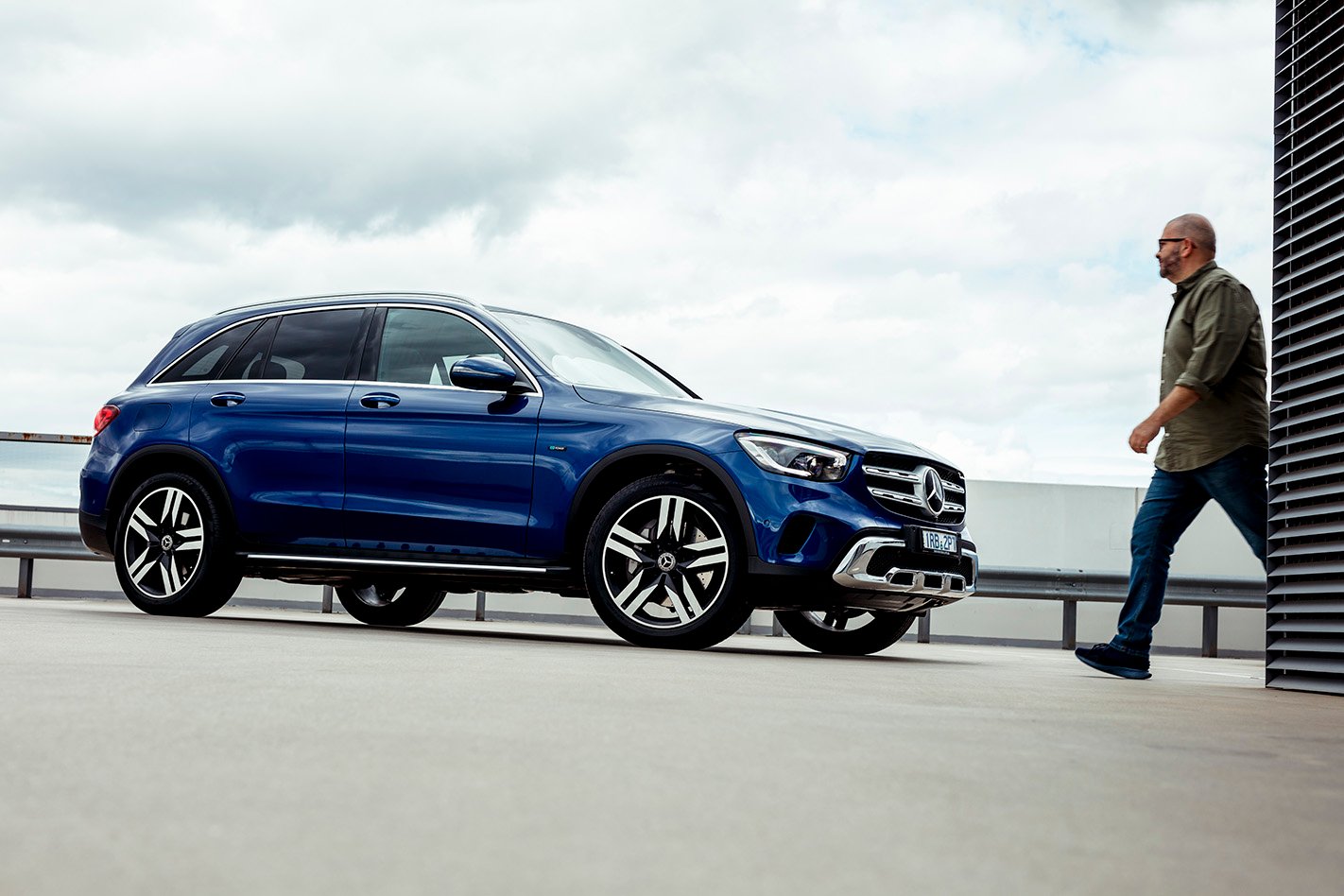
For someone like me, who lives in inner-city Melbourne, 46km is enough for daily running around, particularly during COVID-19 restrictions that see me working from home.
In theory, I’d also be able to make the return trip Oakleigh office, which is just inside my 25km limit, on electrons alone.
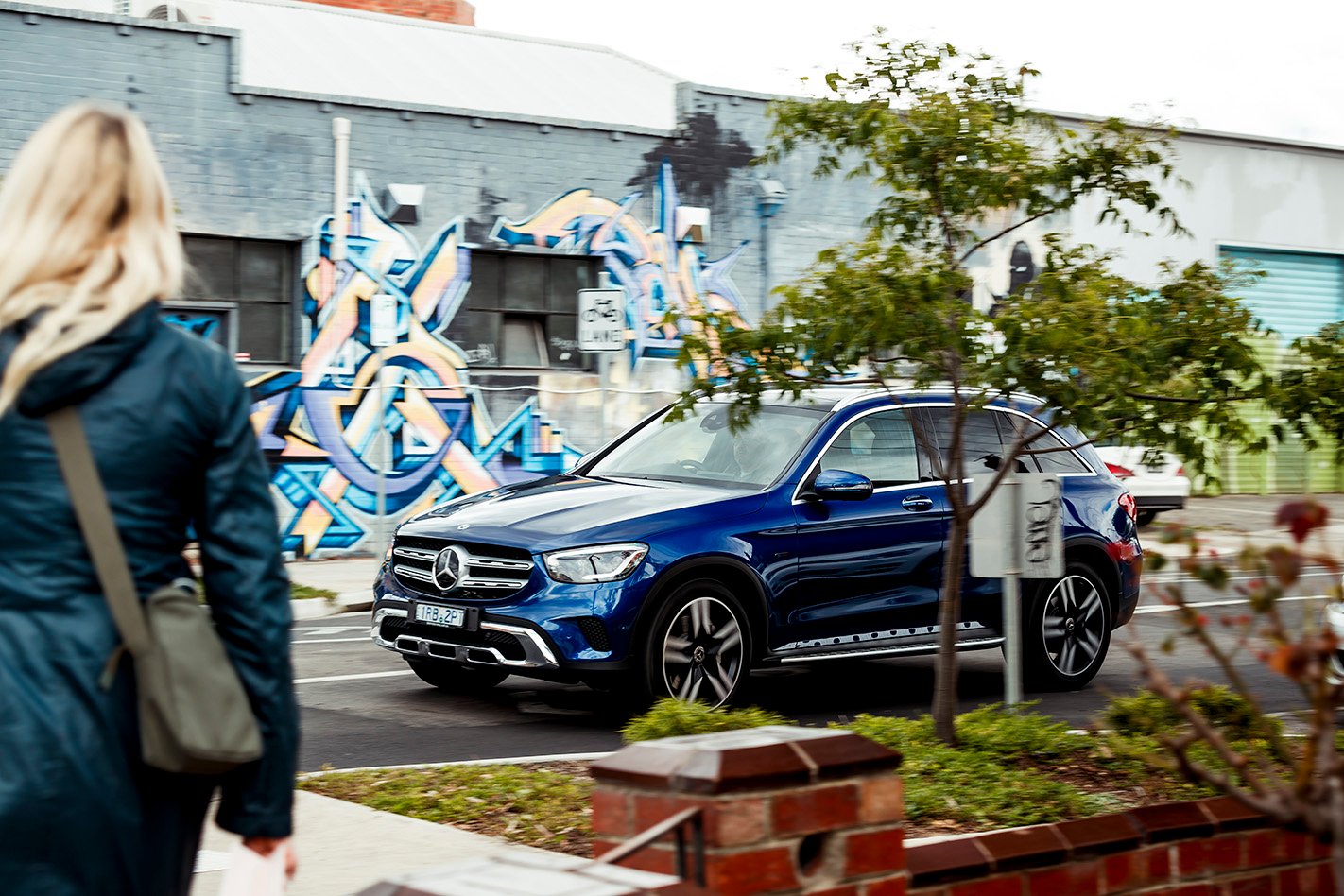
But – and it’s a big BUT – I also have that inner-city problem of no off-street parking so charging the battery overnight isn’t an option.
Plugging in during the day is possible, provided I can get a park out front of my house and can run a cable safely and securely – which isn’t easy.
So I have to rely on public chargers which aren’t exactly prolific in my neighbourhood – I’ll discuss this in the next update.
Mercedes-Benz GLC 300e equipment levels
This is a handsome looking premium mid-sized SUV and the 300-spec brings plenty of bells of and whistles including the fully digitised dashboard, and Benz’s MBUX infotainment system with ‘Hey Mercedes’ voice command.
One thing I liked when I first hopped in this car was how it automatically found my Bluetooth connection without me having to fiddle around with settings on the screen or my phone.
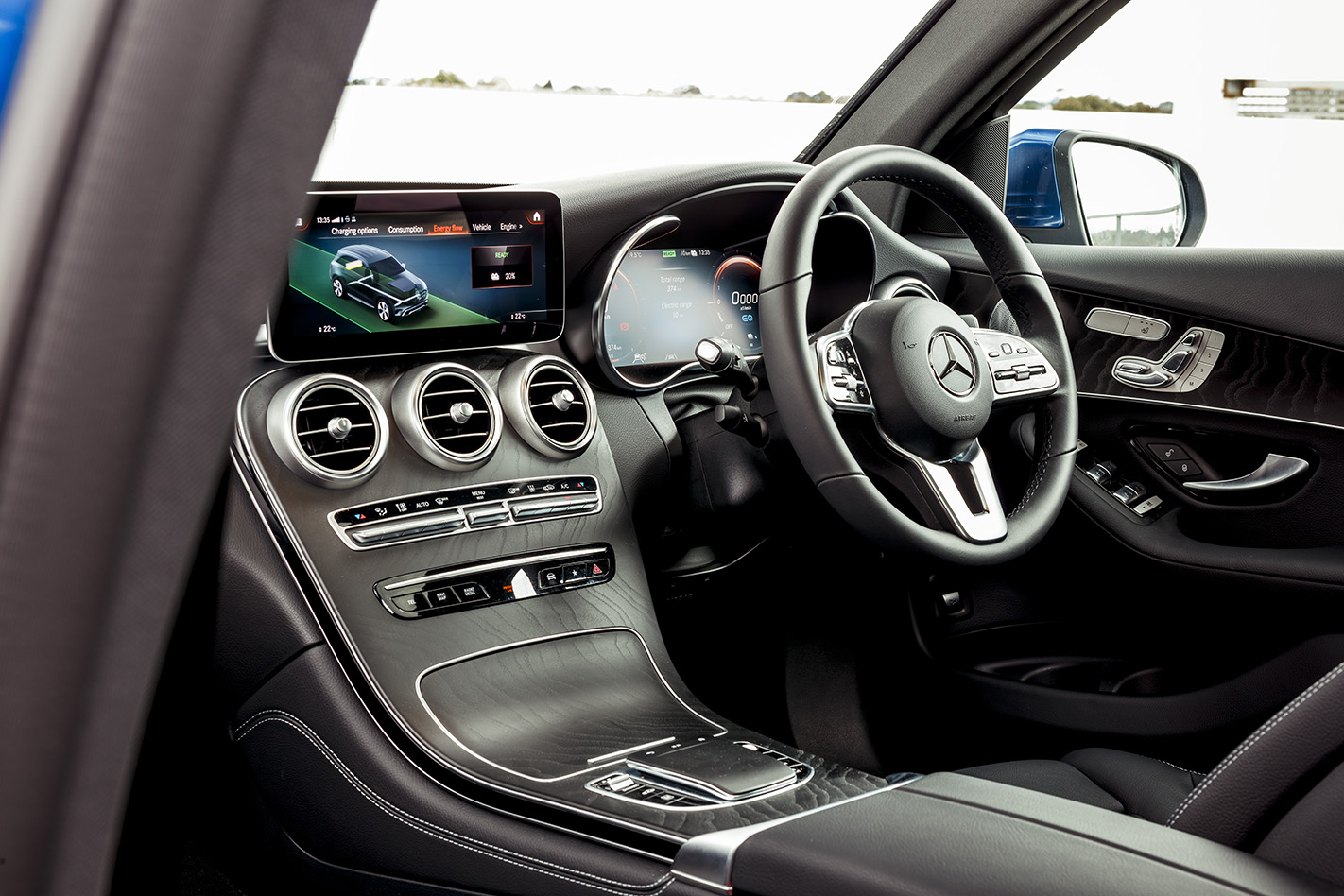
It also has Apple CarPlay/Android Auto via USB which can be a pain as Benz now uses micro-USB sockets so it requires an adaptor cable if you have a standard USB charging cable.
And occasionally there’s a bug where Apple CarPlay can only be operated via the phone (when parked of course), which kinda defeats the purpose.
As well as all the GLC 300e’s scrolling list of standard features, the car we’re testing comes with $11,000 worth of extras to take its retail price to $97,300. These include:
- Brilliant blue premium paint – $1600
- Black leather upholstery – $2900
- Seat comfort package; driver’s seat/door mirror memory function, heated front seats and additional power adjustments – $1300.
- Vision Package; with panoramic sunroof; head-up display and Burmester surround sound system – $5500.
I look forward to trying this out on country roads should restrictions further ease soon.
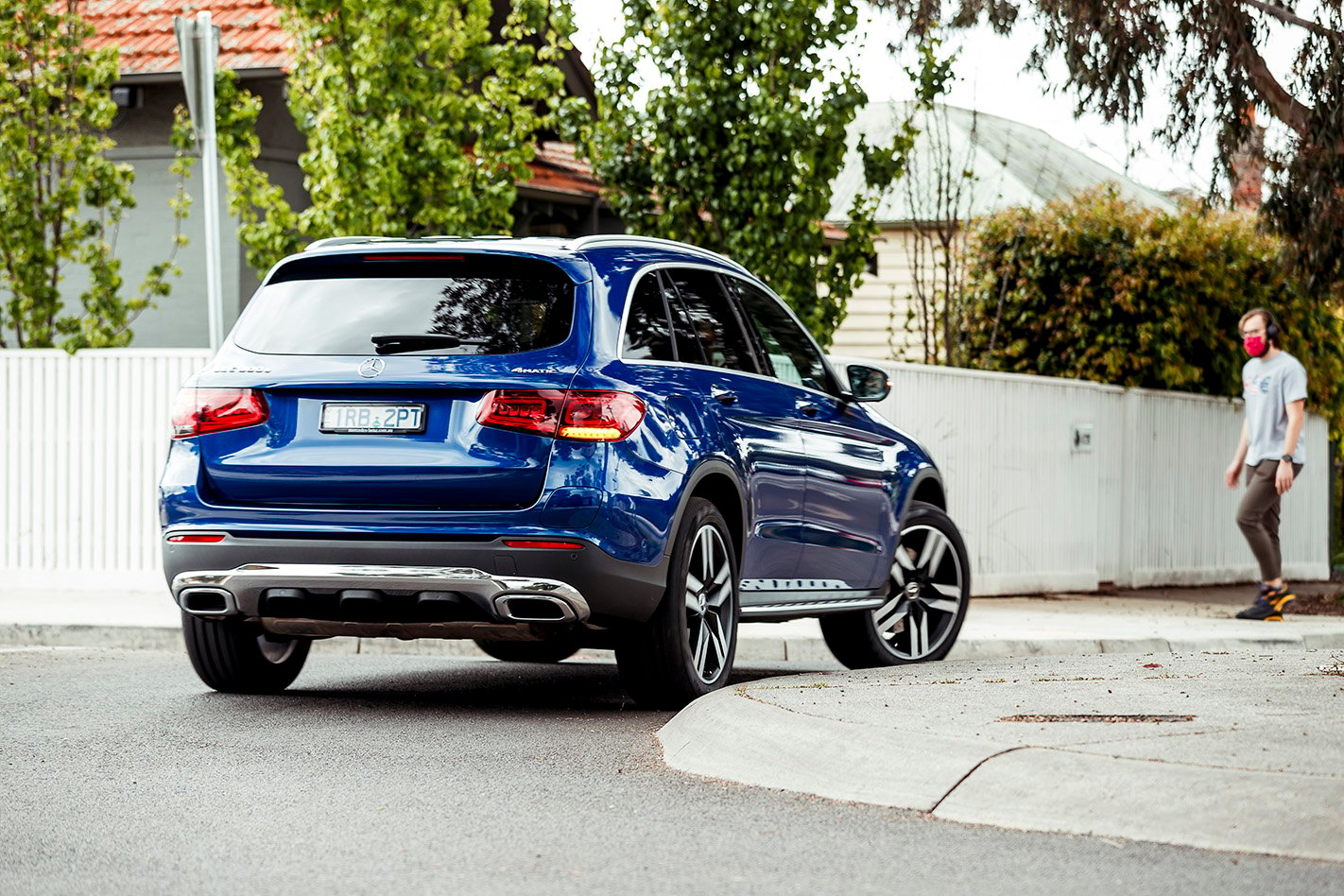
GLC 300e economy figures
Much of the driving I’ve done so far has been with the batteries charged.
I have travelled 110km, 83km of which was in EV mode. The remaining 27km saw premium unleaded petrol consumed at a rate of 3.6L/100km around town.
That’s a little more than the official 2.6L/100km combined rating, though that has all been around town in Melbourne traffic that’s slowly getting back to normal.
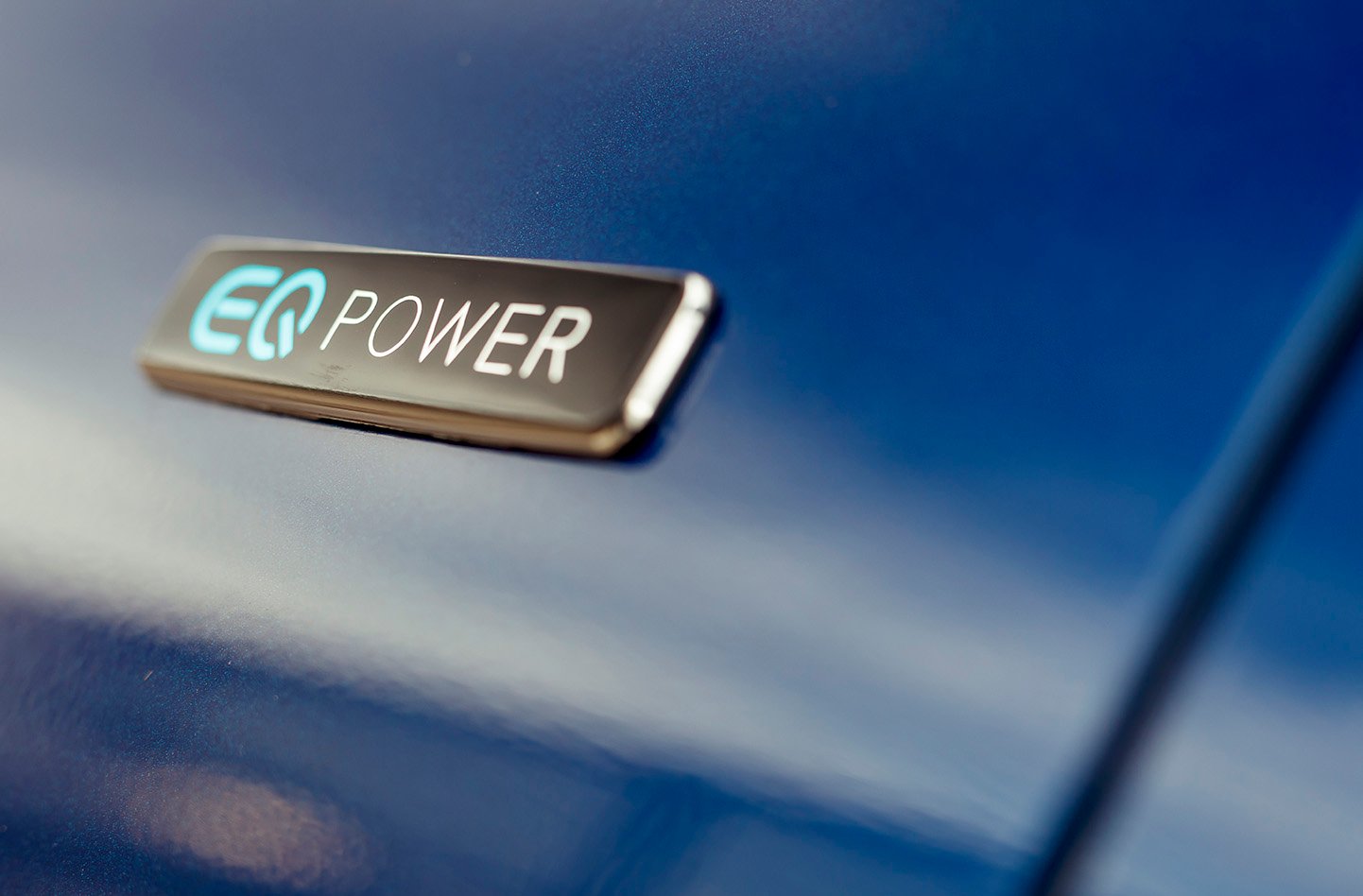
Battery consumption has been 16.4kW/100km.
I’ll be able to provide a better idea of how GLC 300e performs and drinks with the 2.0-litre engine running, and how it stacks up with the standard GLC 300’s official combined 8.1L/100km combined fuel consumption, in the next update.
GLC 300e specifications
- Engine: 155kW/350Nm 2.0-litre, 4-cylinder turbocharged petrol
- Motor: 90kW, 440Nm
- Battery: 13.8kW
- Fuel economy: 2.6L/100km combined (with 46km battery range)
- Emissions: 59g CO2/km
- Transmission: 9-speed automatic with all-wheel drive
- Fuel: 98 Ron
Update 2: Plugging away
You’d think the City of Melbourne would have public chargers everywhere – nope, the only charging the council is good at is the exorbitant rates placed on CBD parking.
So, because I don’t have off-street parking, I have to drive a few kilometres north to Brunswick to access free public chargers kindly supported by the City of Moreland, which you connect with via the ChargeFox app for no additional cost.
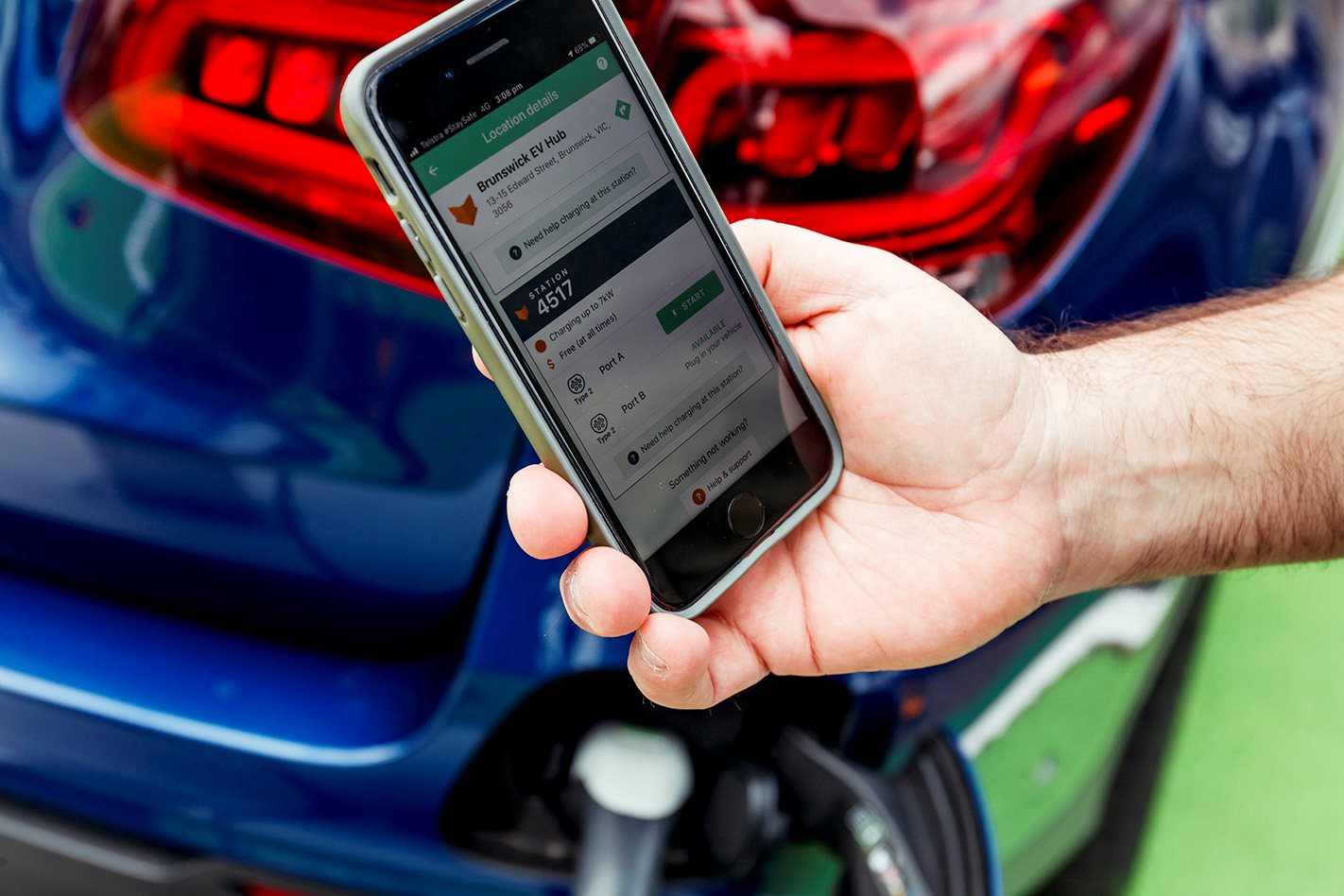
With a bit of planning this could be a pleasant experience. Park the car, do a bit of shopping, grab some nice Turkish food for lunch and drive away. I even sat in the car working on my laptop one time, which was a nice change from my home office.
But I can’t be spending 90 minutes doing this every couple of days. It would be great to park the car nearby by home, walk back, do some work, and return to the car when it’s finished charging.
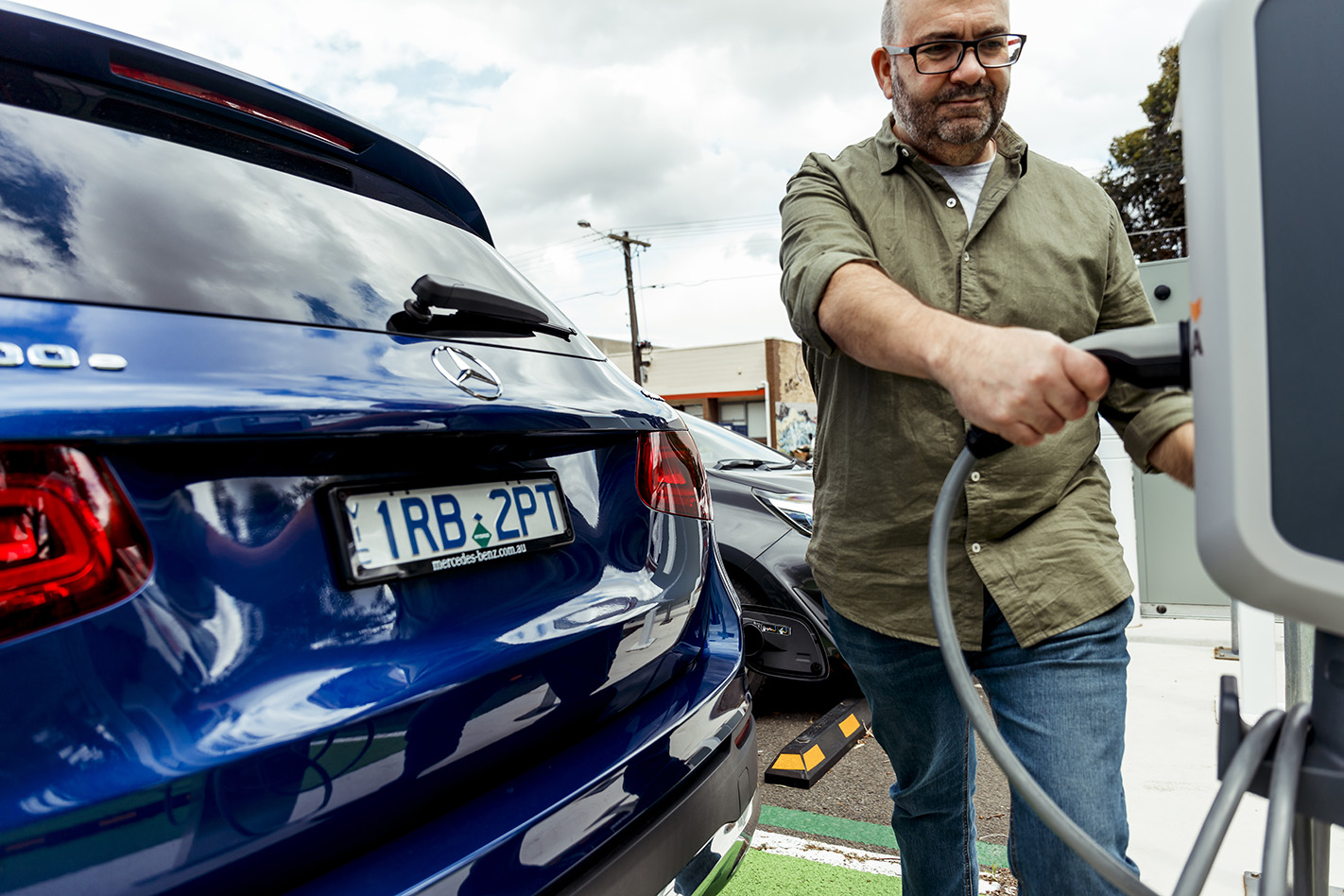
Another issue is how, like most plug-in hybrids, the GLC 300e only has a maximum charging capacity of 7.6kW AC (alternating current) even when plugged into a 22kW AC charger that offers three-times quicker charging. This means it will take just under two hours to charge the 13.8kW battery from flat – only to then lose about 5km of the valuable 46km battery range to return home.
Of course, it’s not the GLC 300e’s fault that Australia lags behind much of the developed world with EV infrastructure or that I don’t have a garage to plug in overnight.
But it’s certainly worth considering if you’re thinking about buying this or any other PHEV and don’t have a handy power source. This is less of an issue for battery electric cars (BEVs) that have much longer ranges requiring fewer trips to a charging station.
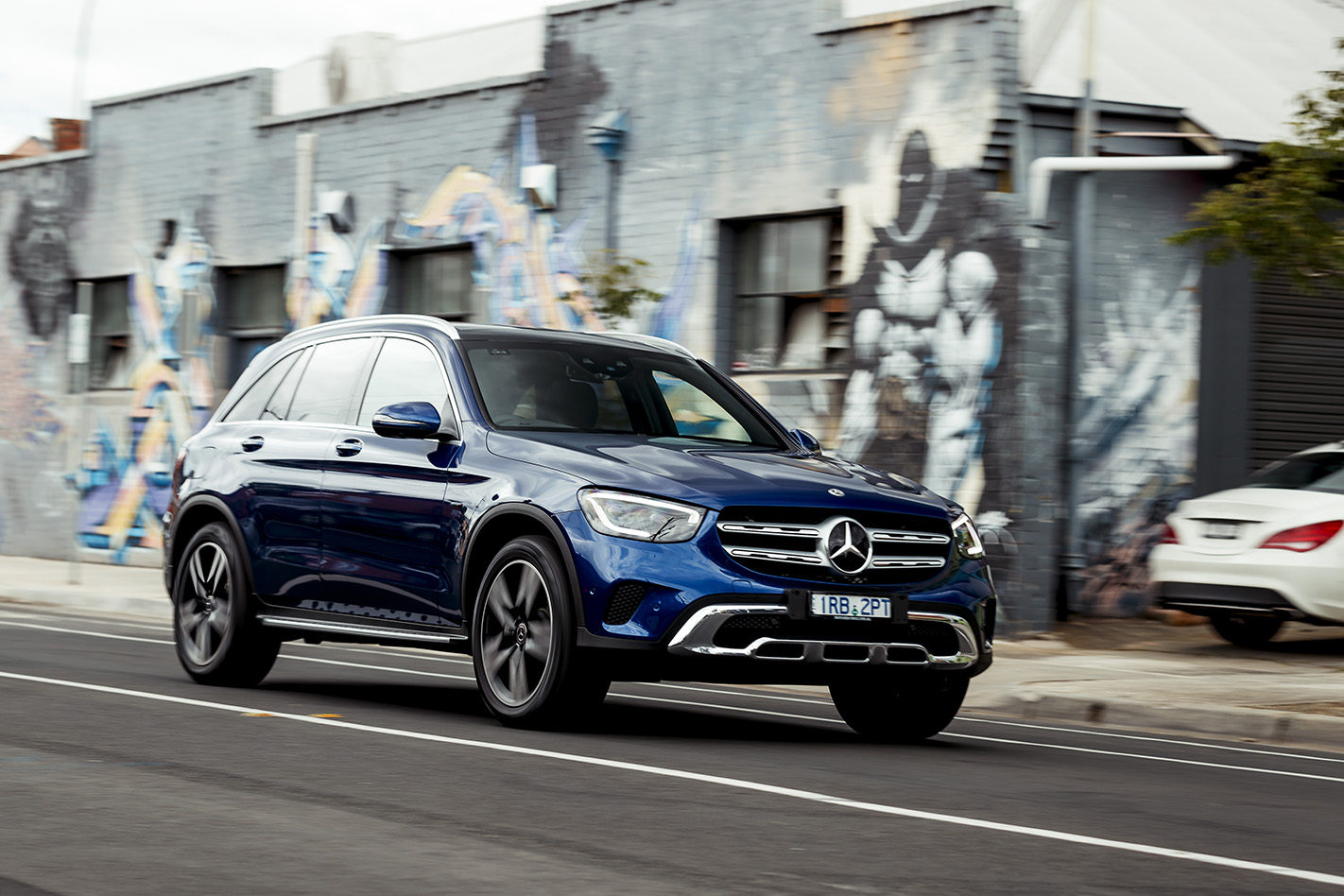
On the plus side, if the GLC 300e battery isn’t charged you can still drive it. It has the same gutsy 2.0-litre turbocharged engine as the GLC 300 and feels pretty perky around town even with the additional 225kg that comes with the hybrid power train.
However, carrying the equivalent of a couple of All Black front-rowers does affect performance. On engine power alone it feels a little sluggish. This can be overcome by using Sport or Sport+ driving modes, but that will end up bringing mid-teen 0-100km fuel consumption.
I have been experimenting with ways to keep fuel consumption down, even when the batteries aren’t fully charged, which we’ll look at in the next update.
Update 3: Keeping lean
One thing I’ve learned is not to obsess too much about being able to drive totally on batteries all the time and being a slave to charging. Plug-in hybrids are about compromise after all, so the key is keeping your average fuel consumption to a minimum rather than going for all or nothing.
Driving a fraction of your journey on batteries alone will help keep overall consumption to low levels – for a vehicle this size anything under 6.5L/100km is good going.
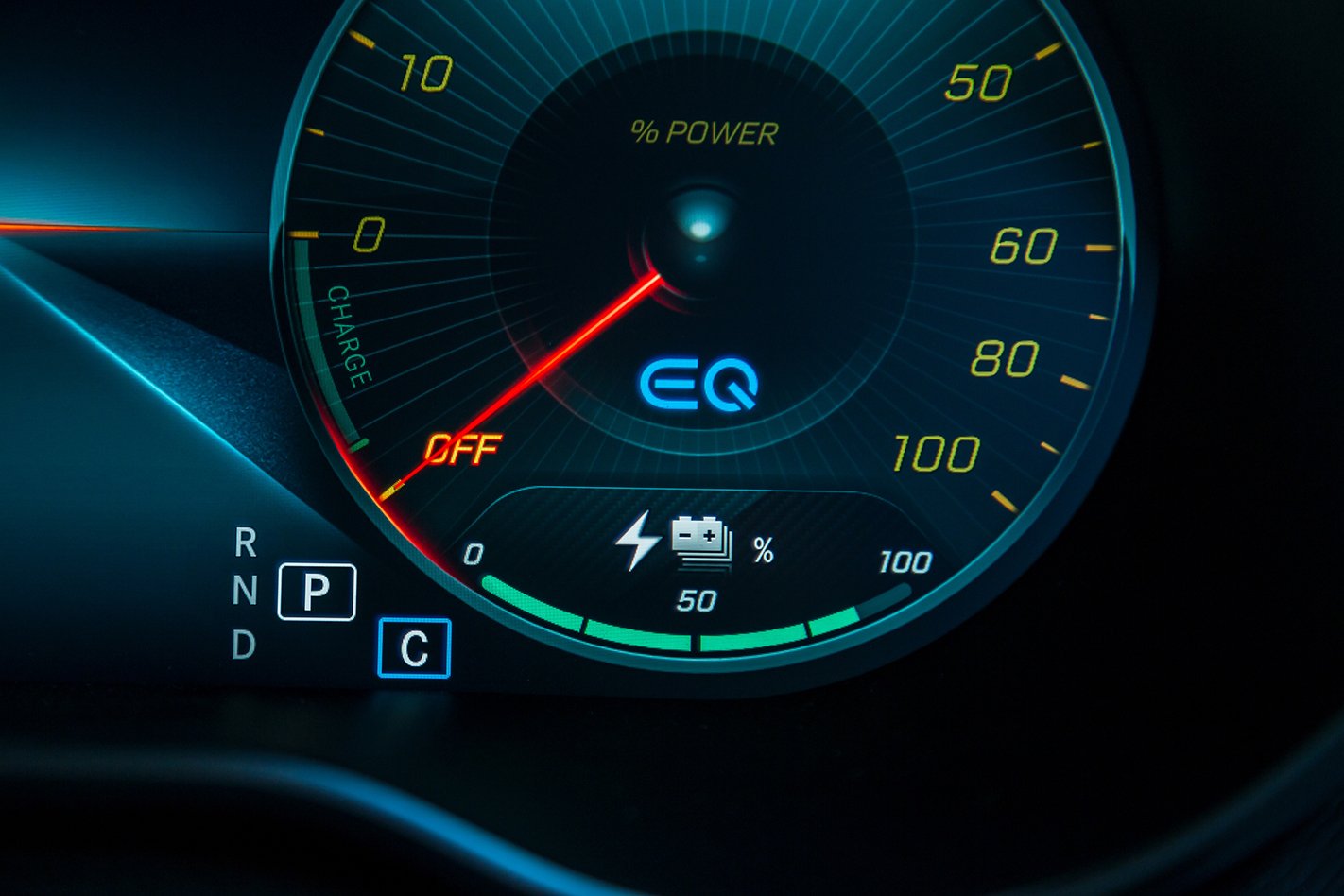
This is where the ‘Dynamic Select’ driving modes come in, which range from Battery Level, Electric. Comfort and Sport.
Okay, scrub Sport for the purposes of this exercise, unless you’re aiming for the same 12.5L/100km fuel economy as my old V8 VY SS Commodore.
‘Comfort’ is the default hybrid mode that defaults to battery power but will kick the engine in when needed. It will even use the satellite navigation data to identify when you’ll be driving up hills to kick in a bit of engine power.
Switching to ‘Electric’ mode runs the GLC 300e solely on batteries unless you double pump the accelerator pedal. It also allows you to set regenerative braking strength using the paddle shifters to help conserve battery charge.
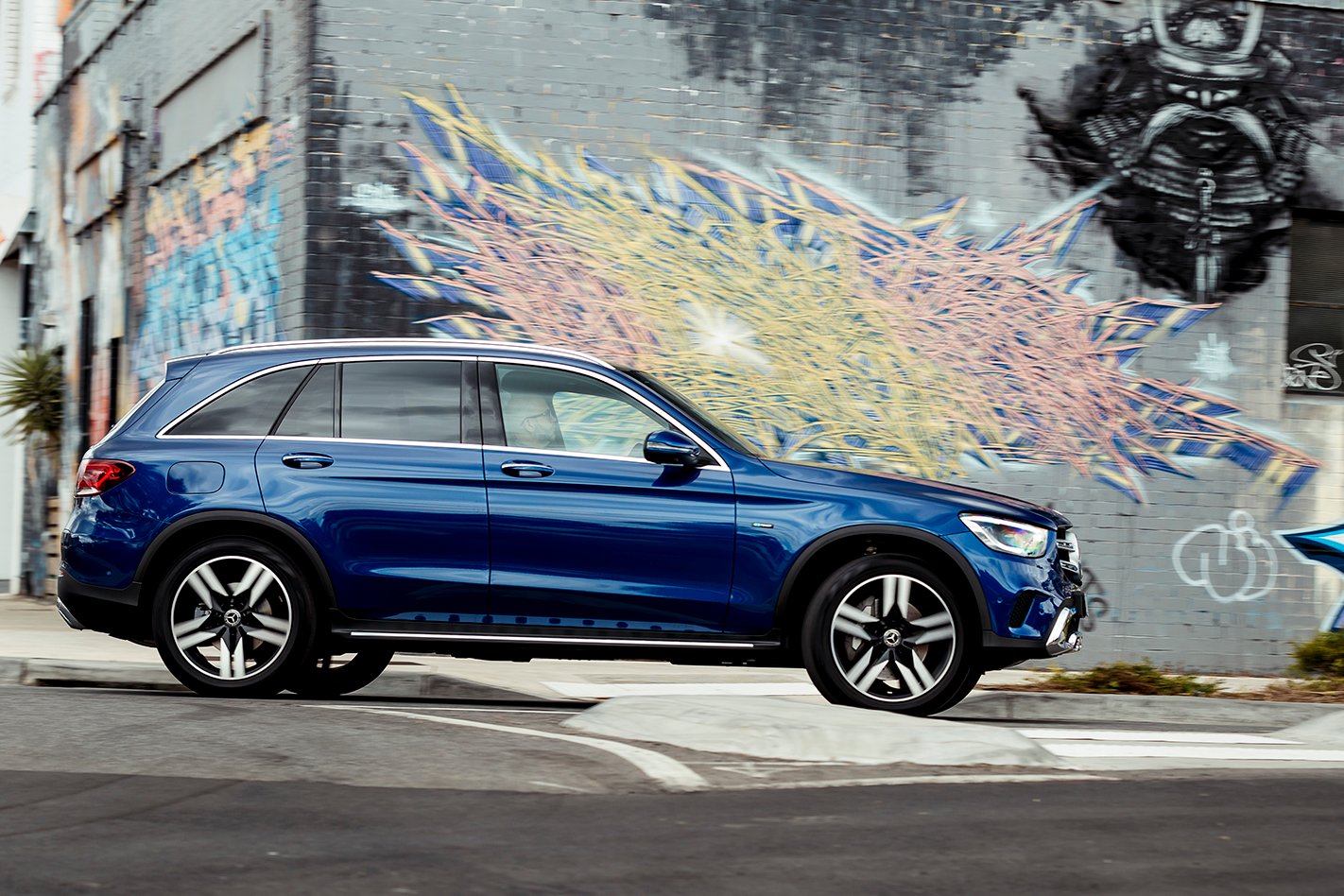
Battery Level mode is for when you’re getting low on charge but want to protect what remaining EV range you have. It drives on the engine alone but also lets you adjust the regenerative braking strength to make up some charge.
I found this handy on the highway where the engine consumption is leanest and you’re better off saving the electrons for when you hit town, to keep reduce fuel consumption in heavy traffic.
Update 4 – Is the hybrid worth the extra cost?
My relatively brief time with the GLC 300e is coming to and end and I have to say I’ll miss it. It’s a wonderfully elegant medium SUV in terms of looks, ride and features. The airy cabin is a very nice place to be and the ride on the air suspension is comfortable to the point of soothing.
It ticks all the boxes for space and comfort. The rear seats have plenty of room for longer legs and there’s plenty of space under the front seats to put your feet and wriggle your toes.
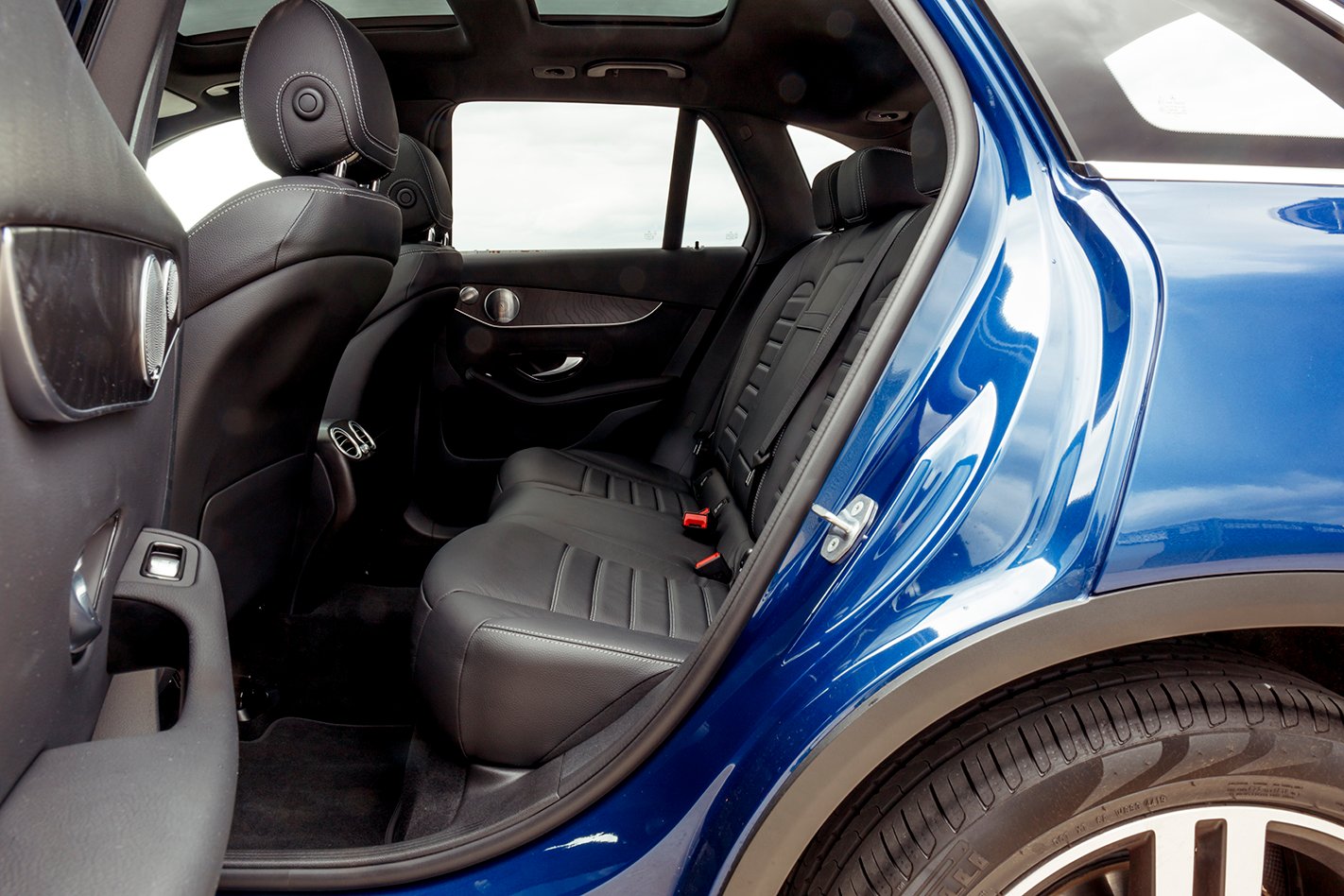
One downside over the non-hybrid GLC 300 is the smaller boot space, down 155-litres from 550- to 395-litres because of the way the lithium-ion battery is stored under the boot floor. But it’s still spacious enough to be useful.
It also has a smaller 50-litre fuel tank, though that shouldn’t be an issue if you’re able to keep the battery charged.

There is plenty to justify spending the additional $4800 over the non-hybrid GLC 300 – as well as the battery and motor, the money brings the excellent air suspension as standard plus pre-entry climate control and a 4.0-metre charging cable with plug Type 2 for home charging.
Because of the difficulties I face with being able to charge at home, I initially wouldn’t have justified spending the extra cash. But having learned to manage the battery power to keep fuel economy and visits to a charger down, I’ve really learned to appreciate the advantages that plug-in power brings.
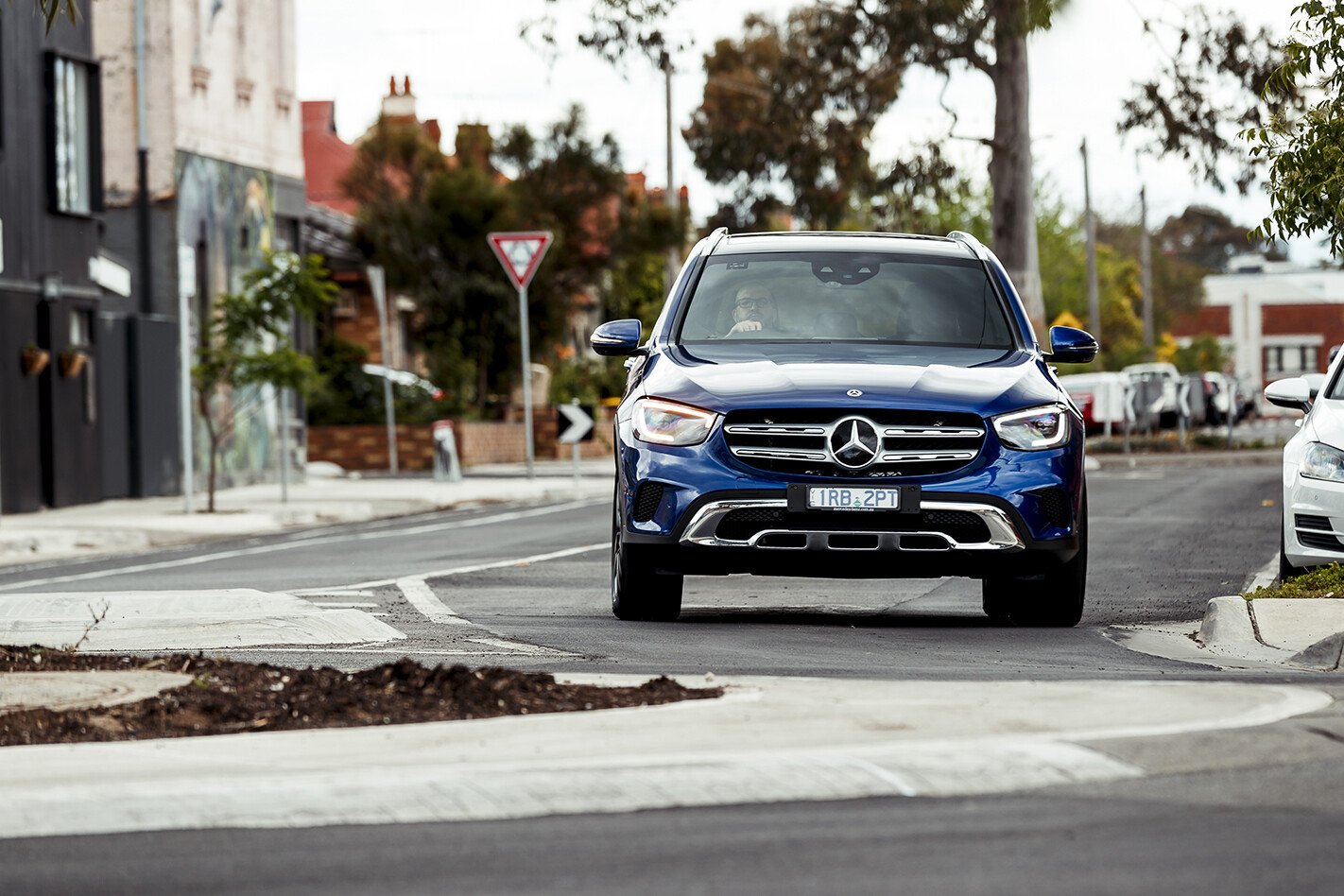
My three weeks with the GLC 300e saw me visit a charger four times, but I didn’t use a petrol bower once.
Most of my driving was around town and my average fuel economy for the entire period was 6.2L/100km without the benefit of overnight charging.
I dare say this will be Mercedes-Benz’s biggest electrified model here for some time.
Pros: Less than $5k premium over standard GLC 300; comfortable ride and handling; emissions-free driving range Cons: Petrol-only fuel consumption; smaller boot than GLC 300




